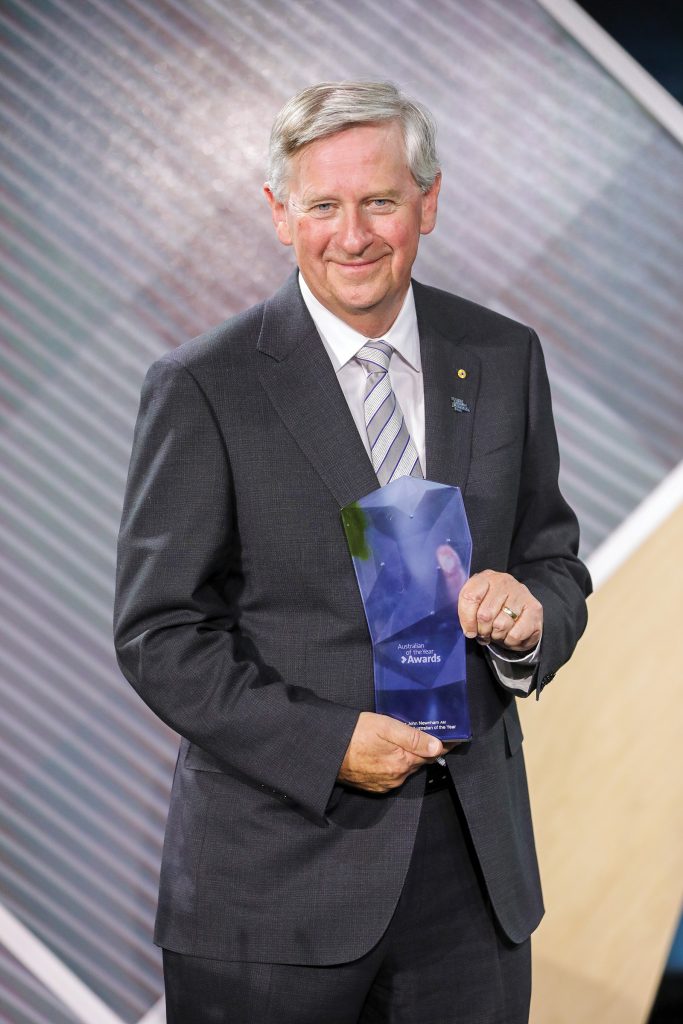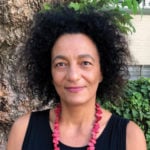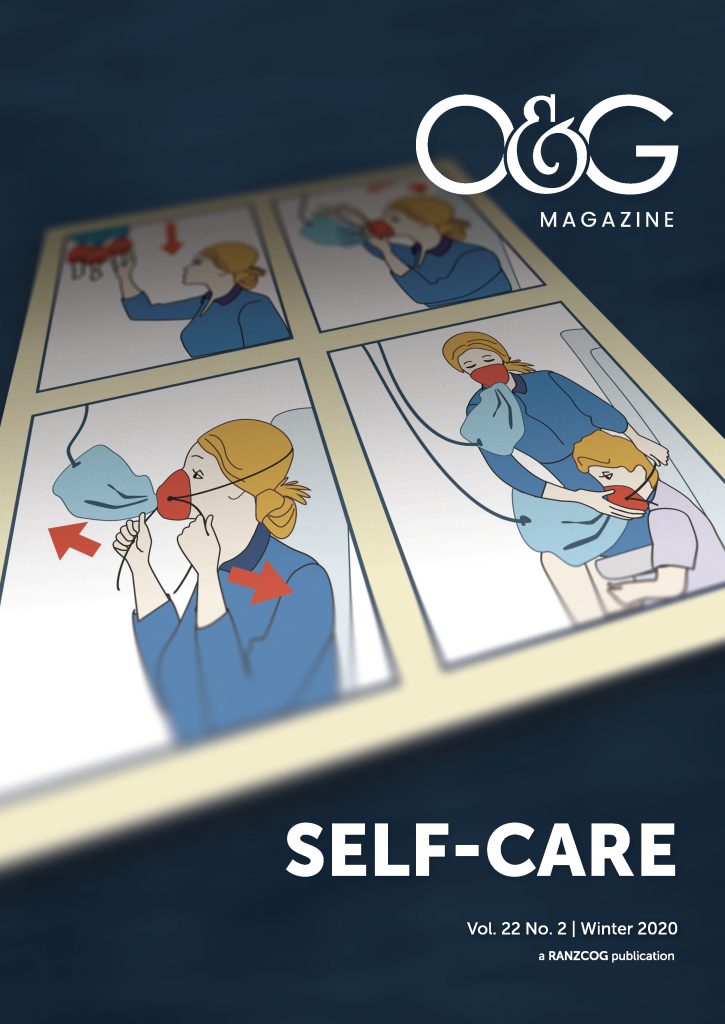It is the subtext of learning that cuts through and opens corridors to what is real, essential and hidden from plain sight.
As a young medical student, Prof John Newnham became conscious of—and then fascinated by—the hidden world of life before birth, which he referred to as an ‘undiscovered continent’. In a myriad of ways, he has spent his professional life exploring that continent. Early on, he set about fulfilling a clear career ambition: how to safely lower the rate of preterm birth. His research led to world firsts and earnt for him, amongst other accolades, the title of Senior Australian of the Year 2020.
John Newnham is recognised as one of the world’s leading authorities in the prevention of preterm birth. A Professor of Obstetrics, he developed a pioneering initiative that resulted in an 8% reduction of premature births in Western Australia (WA) delivered through the Women & Infants Research Foundation, he founded the Australian Preterm Birth Prevention Alliance (the first national program of its kind in the world), and in 1989, he established the pioneering Raine Study, the world’s first and most enduring pregnancy-focused lifetime cohort project.
Dr Roberto Romero (editor-in-chief of the American Journal of Obstetrics and Gynecology) summed up John’s contributions when he said, ‘An intellectual leader of modern obstetrics, Prof John Newnham has made pioneering research contributions which have changed the practice of medicine and improved the health of women and infants. He is an exceptional physician-scientist, teacher, and ambassador for our discipline.’
John spoke to me via phone from his office at Perth’s King Edward Memorial Hospital in January, not long before he received his Senior Australian of the Year award, and just as the World Health Organization was sounding the alarm over Wuhan’s Coronavirus epidemic. We talked about the journey from the moment he heard about his nomination to the months leading up to the award night in Canberra, along with his ground-breaking work, becoming a pioneer and advocate for change, and how he shifted the entire world’s perception of preterm babies.
During our conversation, I admitted that I was one of the many who thought that preterm births were unavoidable and generally had a safe outcome.
John replied, ‘Our profession has done this: we often said that it would be okay, and told you babies will be fine. Not knowing now there is data to show it has ramifications on school children and their behaviours.’ Clearly there is much re-education that needs to take place.
The Senior Australian of the Year profile, he hopes, will help to get this message across.

Prof John Newnham receives his Senior Australian of the Year award.
So, the morning after the January 25 awards ceremony in the Village Centre at the National Arboretum Canberra, John was on national breakfast television and radio. Even though he’d had only a few hours’ sleep, the re-education of Australia had begun.
‘Babies are not mature until 39 weeks.’ As John explained to me, ‘We have been misled by our predecessors into thinking that term is 37 weeks. It certainly is not. Preterm birth is the single greatest cause of death and disability in children up to five years of age in the developed world and a major cause of lifelong disability. Eight per cent of Australians are born preterm. And in Indigenous Australians, that rate is almost double.
‘The gestational age has profound implications on these children. Many will go on to live a normal life, but for many…in the newborn period, it is death, respiratory disease, cerebral haemorrhage, necrosis of the bowel, infections, and prolonged stay in an intensive care environment. In childhood, it is cerebral palsy, chronic lung disease, deafness, blindness, learning difficulties and behavioural problems. In adulthood, it is metabolic syndrome, diabetes and heart disease.’
I asked John, ‘How is premature delivery preventable?’
‘Every year worldwide, 15 million babies are born preterm, and it is the biggest cause of death of children under five. We want to make sure no babies are delivered before 39 weeks of pregnancy, without a medical reason. Through research, we have learnt that some of the very early preterm babies can be prevented by us doing certain ultrasound measurements as part of the normal mid-pregnancy scan. So, we are making changes to the way we use ultrasound during mid-pregnancy variants. A mid-pregnancy scan would include a measurement of the length of the cervix. We have simple treatments that we can use to reduce the risks of babies delivering early if we find an abnormality on those scans. The most important thing a woman can know is the length of her cervix come mid-pregnancy.
‘A short cervix at 16-24 weeks is a predictor for preterm birth. Identifying this at the standard 19-week ultrasound means the mother can immediately start progesterone, a treatment that will take half of those at risk to full term,’ John said.
‘I haven’t seen an ultrasound report from a mid-pregnancy scan in WA in years without the cervix length included. This simple measurement has had a profound and immediate effect on outcomes in WA. After 18 months, the rate of preterm birth was lowered by almost 8 per cent. Most of the reduction was seen in the late preterm birth group (greater than 34 weeks gestation), with a matching rise in deliveries after 39 weeks.
‘Programs are now being rolled out across Australia. There is no road map to follow, but we should be proud of the fact that no other country has ever lowered its preterm birth before.’
There was a moment, immediately after the Australia Day ceremony, when a reporter asked, ‘Will you use this award to propel your message?’ John raised an eyebrow and said, ‘Of course. The goal is to get rid of preterm birth, to do everything we can to make sure that every Australian baby is born healthy at full term and can achieve that child’s potential.’
Later, he tells me, ‘There is nothing more valuable that I can do with my time: to study a cohort of people from early fetal life, through to the rest of their life span.’
But then his modesty gets the better of him—the Australian of the Year award is humbling. John doesn’t believe he has worked any harder than his colleagues. ‘I’m not made of this stuff. I was taught not to stand out, to be one of the boys. Even on the footy field, if you happened to kick a few extra goals that day, the boys would bring you back to earth. I have asked myself, why me?’
John tells me he sacrificed a lot, missing celebrations and important events to attend to his work. ‘I’ve been an OB for decades, my wife had to suffer with me not being at home and she has done a wonderful job raising our three children. The highs are very high, the lows are very low, but it is an extremely rewarding job.’
On one level, we are driven by the unconsciousness to get through, at times it can become a default setting, what some refer to as the rat race. John’s gnawing sense of intrigue for uncharted territory broke through and brought him to a world stage in his field. ‘I had no intention of becoming an O&G. I was 22, in my fifth year of medical school (back then it was a six-year course) when I was going through one of the textbooks before a lecture, and noticed something about the fetuses—back then they were referred to as a passenger and the mother as the power. I could see that each fetus was different. All the faces were different sizes. Some were fat, some small, some trim. I asked what it meant and what implication this would have on the baby.’ This was long before live ultrasounds were available, and John was told that his job would be to deliver a baby, and the day it was born was its birthday. That was when John became aware that unborn fetuses were an ‘undiscovered continent’.
‘I don’t run with the pack and I always wanted to be an explorer,’ John said. ‘I’ve been an OB for 40 years, the magic never goes, and the great pleasure for families as they build their family and have their children is one of the most wonderful things in life. But it’s not wonderful for everybody and it’s not safe for everybody and the biggest problem in Australia is the risk of being born preterm. Every day, I see women delivering preterm babies and I know what the future holds for many of these children. Now we’re really doing something about it and Australia has a terrific healthcare system and we are in a very good position to lead the world in this field.’
With every answer, with every insight shared, he expresses empathy for those who may have suffered and what they may have endured. It is this compassion for others that continues to be his driving force. As part of a video project recorded last year, John says, ‘I apologised to the parents for not having been able to prevent the early birth of their child. It inspired me to find a way to prevent this heartache and pain for the parents and suffering for their child.’ Not surprisingly, John ultimately began to think about how to predict those catastrophic early deliveries.
‘In 2013, I was in the operating room of our theatre—it was late at night and I was working with my colleague Scott White who has an office with me right next door. A woman came in, her water was broken and the baby was lying sideways. I knew we would have to carry out an invasive caesarean section to safely deliver this baby.’ The patient was 26 weeks pregnant (24 weeks in utero is considered the edge of viability) so the fetus’s organs were present but not yet responsible for sustaining life. Her child would need nearly four months of protected development in the womb.
‘We handed the newborn baby of 600gm to the paediatrician and I knew what lay ahead for the child and for the family, and it was going to be months in the intensive care unit.’ The infant would spend the next few months in the hospital in a clear plastic incubator, dwarfed by large machines and barely visible among the tangle of wires and plastic tubes. And every day, the parents would strain to reach and gently stroke a leg or an arm via the two side ports, the only means of providing vital human contact.
‘The months ahead can be frightening and very lonely for the parents and I thought to myself, how can we prevent this? This woman would have had her mid-pregnancy scan six week ago. How can we possibly leave this unattended? How can we possibly continue to let a woman go past 20 weeks of pregnancy without doing all we can to make sure that she is not going to have a preterm birth? So, in the corridor outside that theatre in 2013, I decided we would roll out the program across the state: The Whole Nine Months.’
John and I meet again, eight weeks later, when we have moved from an epidemic to a pandemic. We are now living in a different world, or as John puts it, ‘We have retreated back to the borders.’ We talk about the year to come and John says, ‘My whole whiteboard was covered and within 72 hours, the whole thing had folded. Every conference, every group and every function.’ I ask, ‘How will you get your message across?’
‘There are many ways to get a message across and alternative ways of communicating. We just need to find another way of doing it.’ John remembers The Whole Nine Months program. ‘In 2014, I thought I would have to raise money for television advertisements. I was educated very quickly that social media was the way to go, and the number of hits we have got across various platforms is wonderful.’
After a moment’s pause, John says, ‘I think good things will come out of this. I don’t think things will go back to the way they were. The technology has set up everyone and we have the means to deal with it. There has been two weeks of massive change and in the hospital, we’re preparing for the onslaught.’ Right now, John’s main concern is how to reach pregnant women who are at their most vulnerable during this COVID-19 crisis.
Over the decades, John has not been averse to change, and I ask how caring for women has changed during those years.
He reflects on changes he has seen at King Edward Memorial Hospital, Perth’s main maternity hospital for over 100 years and where he has worked for most of his life. ‘The population has changed. It is now a lot more multiracial. We’re also seeing women who are older and who are living with heart disease, severe diabetes, cystic fibrosis, and so we have to know more. When I was studying OBs in university, it wasn’t as complicated as it is now. It used to end with the placenta being delivered. The aim is no longer just to deliver the baby. Now it is more demanding, multidisciplinary, you have to work in teams and it’s much more gratifying. It’s what happens before the birth. Across the country, there are many OBs, GPs and midwives who are very committed to making a huge difference.’
John has only gratitude and praise for the teams he has worked with over the years, and tells me it was the one sticking point when the ABC asked him (and every other nominee) to make a pre-recorded message to be played before the winners were announced. ‘I’ve worked with a team for decades so I couldn’t talk about the work as if it was just me. But they kept asking me to say I instead of we when referring to the work. They said, “It’s not about the teams, it’s about you”. We finally came to an agreement when I said that I would say “My team”.’
All of John’s attempts were met with encouraging feedback, but they kept asking him to repeat what he had just said. Something wasn’t working, but it was only after many attempts that the penny dropped. ‘I went back to the days when I sat for my O&G oral exams. I realised that I was being tested and as soon as I made that connection, I thought “Okay, I know what I have to do”, and I felt inspired. Then they said, “Now tell a funny story”. So I said, “If I was running for Prime Minister, I would make it a priority for every woman to know the length of their cervix”.’
‘Did they laugh?’
‘They didn’t think that was very funny.’
John eventually got through the day and his message can be found here: www.abc.net.au/7.30/professor-john-newnham,-wa-senior-australian-of/11867966
There is a journey that you travel on when you’re nominated for Senior Australian of the year. On one level, it’s an emotional journey of several months, as well as the eventual physical journey to the National Arboretum in Canberra, which features 700 acres of world-recovered seed from trees that are re-fertilised, nourished and then replanted. One of the Arboretum’s well-known features is the beautifully curved Gift of Life Garden that references the cycle of life and the constant underlying rhythm of a heartbeat. John says that while he was walking through the garden, he was mentally preparing himself for what it would mean if he was to become Senior Australian of the Year.
I ask John, ‘What does it mean to be an Australian of the Year?’
‘As an everyday Australian, you can be anything you want, but we are joined together by certain principals, values and responsibilities. When you are put in a leadership role, that’s when you have to step up. I now have a responsibility.’
Everyone who has achieved significant goals in their work, family or personal life has learned how to put setbacks in perspective in order to overcome challenges that life throws at them. John tells me, ‘When there are challenges around, I put my head down, I work hard, stay productive, and be kind to as many people as I can. I believe that good fortune will then find you. And that’s exactly what has happened in my life.’
After a pause, he has another humbling moment and says, ‘You know, on Tuesday night, I still had to put the bins out.’






Leave a Reply